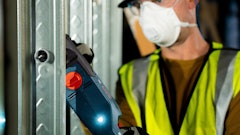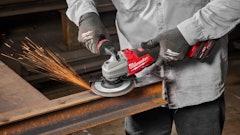Why does tragedy have to strike before government starts to pay attention to the country's infrastructure problems? It happened in New Orleans with the levee breaks following Hurricane Katrina, then more recently in Manhattan with the steam pipe explosion. Now, it's occurred again with the collapse of the I-35W bridge in Minneapolis.
The bridge collapse last month was hardly surprising given the poor condition of U.S. bridges. Back in 2005 (and prior), the American Society of Civil Engineers warned that one in three urban bridges were rated as structurally deficient or functionally obsolete. At that time, the I-35W bridge had garnered a "structurally deficient" label, rating only a 50 on a scale of 100 for structural stability.
Despite this sub-par rating, only stop-gap measures were put in place to monitor, inspect and maintain the structure. Ironically, repair work was taking place at the time of the collapse. In fact, this activity - due the weight of construction equipment and materials - is seen as a possible contributor to the stresses that led to the bridge's failure.
Even more ironic are the statements issued following the bridge collapse. In a USA Today report ("Minn. bridge warning issued in 1990", August 2, 2007), President Bush is quoted as saying: "We in the federal government must respond and respond robustly to help the people there not only recover, but to make sure that lifeline of activity, that bridge, gets rebuilt as quickly as possible."
Sen. Amy Klobuchar (D-Minn.) is then quoted as stating up to $100 million in federal funds will be available for rebuilding and recovery. "A bridge in America just shouldn't fall down," she adds.
But where was this federal support prior to the collapse? And why weren't these federal dollars available to not just repair, but replace this aging and clearly deficient structure before lives were lost?
As with other such tragic events, lessons are finally being learned. Bridges across the country are undergoing inspections. Federal purse strings are being loosened for much-needed repairs. And legislation is being proposed to improve the quality of bridge inspections, and ensure repair and replacement where needed.
Within days of the bridge failure, Rep. Jim Oberstar (D-Minn.), chairman of the House Transportation and Infrastructure Committee, unveiled the "National Highway Bridge Reconstruction Initiative", a program that would provide dedicated funding to states to repair, rehabilitate and replace structurally deficient bridges on the National Highway System. Supported by the Associated General Contractors of America, the American Road & Transportation Builders Association and other industry organizations, this initiative would:
- require significant improvement in the processes for bridge inspection;
- establish a trust fund (similar to the Highway Trust Fund) for bridge repair, rehabilitation and replacement;
- and require the U.S. DOT to develop a formula for distributing all funds - prohibiting any Congressional or Administration earmarks in the process.
This long overdue initiative is too late to help the victims on I-35W. We can only hope it will serve as their legacy for the future.









![Hcm Ax Landcros Dual Branded Logo[25]](https://img.forconstructionpros.com/mindful/acbm/workspaces/default/uploads/2025/11/hcmaxlandcros-dual-branded-logo25.Qhg3vUCjoK.jpg?ar=16%3A9&auto=format%2Ccompress&bg=fff&fill-color=fff&fit=fill&h=135&q=70&w=240)








